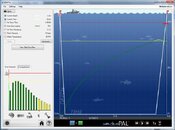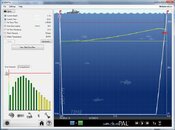TSandM's description is great - and frequently used in knowledge development presentations during the IDC! ;-)
The purpose of this question is exactly as she says - whilst we dive conservatively and take all precautions that we can, including making safety stops and taking surface intervals, sometimes, they simply aren't necessary; given certain conditions, we can dive and surface and then head straight back down again. The purpose of this question is to demonstrate that immediate descent after ascent is possible - and there are a plethora of reasons why this might be so - not least of which might be heading back down to pick up a dropped item, or possibly just the fact that the Open Water training course requires you to make several ascents and descents in succession.
It's not always possible to justify this type of dive profile, but the short answer is that in some cases, when your "bucket is not too full", there is no indication that you are placing yourself at any increased risk of decompression sickness.
Cheers
C.






